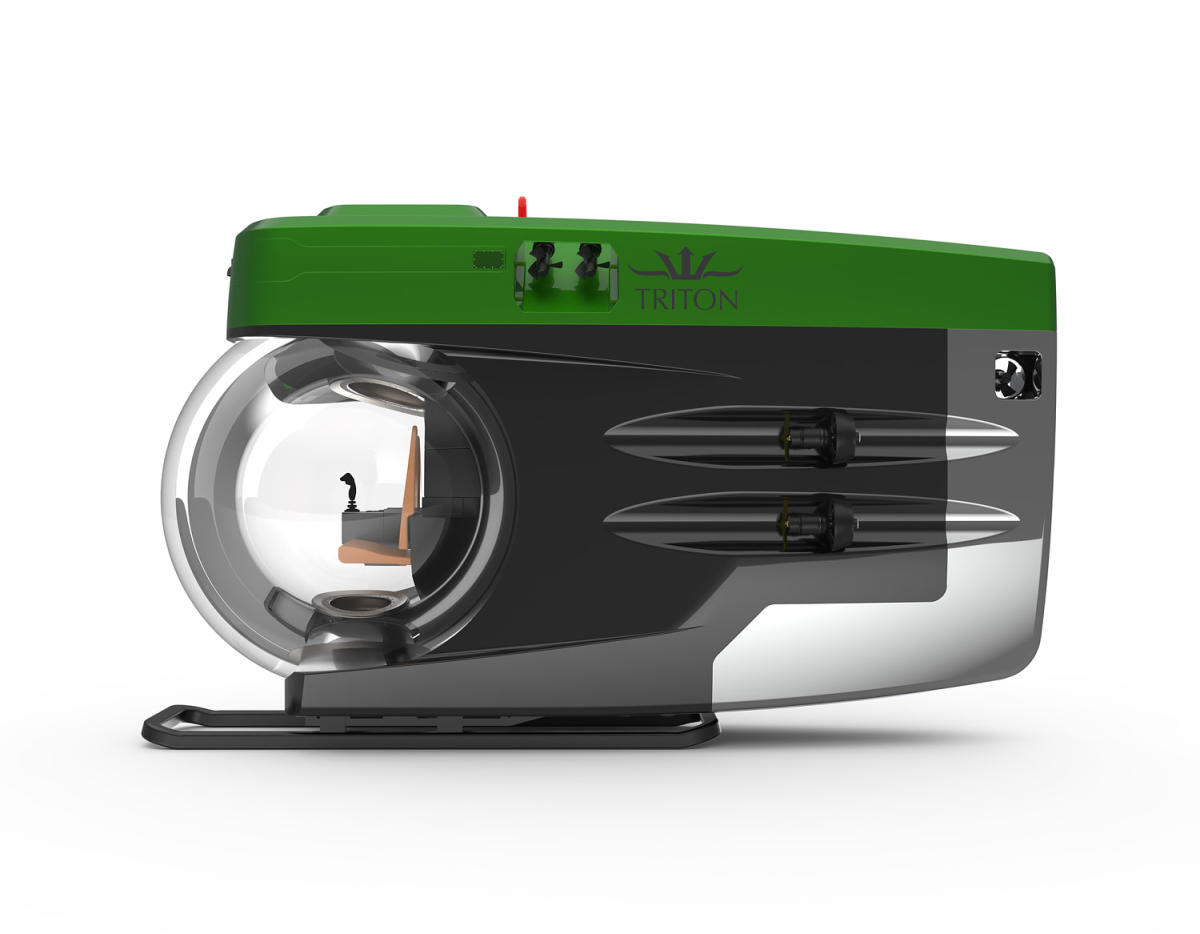Bull market or bear market? Or a trend-less market as seen for weeks until news late last month that political leaders on both sides of the U.S. chambers of Congress reached a deal to raise the debt ceiling? Regardless of what stage of the market cycle we’re in, some folks never tire of searching for cheap stocks to buy.
X
And who doesn’t love a bargain? After all, the lure of finding a stock that triples from $1 to $3 a share, or quintuples from 50 cents to $2.50, seems irresistible.
But do you know the unique problems and subtle challenges of hunting cheap stocks to buy for big gains? Let’s consider a few.
The First Challenge
Hundreds of equities trade at a “low” price on both the Nasdaq and NYSE. So, how can you pick the winners consistently? Here’s a second challenge: Most institutional money managers don’t touch cheap stocks.
Imagine a large-cap mutual fund trying to buy a meaningful stake in a stock that trades at 30 cents a share. If trading volume is thin, the fund manager would have an awfully tough time accumulating shares — without making a big impact on the stock price.
Third, IBD research over the decades finds that dozens, if not hundreds, of great stocks each year do not start out as penny shares. They tend to already trade at 20 or 40 a share before they go on mind-blowing rallies.
Solid, expanding institutional buying among fundamentally strong companies with double-, triple- and even quadruple digit share prices makes up the I in CAN SLIM, IBD’s seven-factor paradigm of successful investing in growth stocks. The I stands for institutional ownership.
Stock Market Forecast For Next Six Months: What Investing Pros Are Watching Closely
Cheap Stocks To Buy: Avoid This Pitfall Too
Another cold, hard truth that proponents of penny stocks don’t tell you? Many low-priced shares stay low for a very long time.
So, if your hard-earned money is tied up in a dollar stock that fails to generate meaningful capital appreciation, you might not only be nursing a dud stock. You also face the losing opportunity of investing in a true stock market leader such as names that enter IBD Leaderboard or a standout in the IBD 50, IBD Sector Leaders, the Long-Term Leaders, or IBD Big Cap 20.
Let’s consider Zoom Video (ZM) in 2020, one of the superstars coming out of the 2020 coronavirus bear market.
Zoom and many other institutional-quality firms traded at an “expensive” price when they broke out to new 52-week highs and began magnificent rallies. But the quality of their businesses, supercharged sales and earnings growth, and heavy buying by top-rated mutual funds affirmed a premium in their share prices.
After clearing a deep cup base at 107.44 in February 2020, Zoom rose nearly six-fold to its peak the same year at 588. Now? Zoom stock is working on a new base and trying to bottom out. ZM is still trying to climb resolutely above the 200-day moving average.
After rallying from 63.55 to 85.13 from December last year to early February, the stock has been hitting upside resistance near 75 for more than five months. The stock recently tried to break out of a first-stage cup pattern with a 75.10 buy point, but the breakout withered fast.
Stock Market Today: Will MSFT Build This Bullish Chart Pattern?
5 Cheap Stocks To Watch And Buy
IBD Stock Screener filters cheap stocks that not only trade at $10 or less per share. Some also carry many of the key fundamental, technical and fund ownership quality traits routinely seen among the greatest stock market winners.
Keep in mind that liquidity is often thin. So, you might not get trade executions at an ideal price. If fund managers dump boatloads of shares to book profits, you might incur further losses when exiting the stock.
So, check the gap between a cheap stock’s best bid and best ask prices, or the difference between what one investor is willing to pay and another is willing to sell. The smaller the gap between bid and ask prices, the less price slippage.
And don’t forget the No. 1 rule of investing: keep your losses small and under control.
Check Out IBD Live! Trade Top-Quality Stocks With Growth Investing Experts And Pros
Cheap Stocks To Buy, No. 1: Bitcoin Play
Cipher Mining (CIPH) soared nearly 18% in massive turnover on Tuesday. Shares also pushed back above its 50-day moving average for the first time in more than two months.
There is no proper buy point for now. However, Cipher Mining looks on track to build the right side of a new base.
Watch to see how the stock handles a potential overhead supply of willing sellers near 4.
On Tuesday, Bitcoin soared to as high as $34,996, extending year-to-date gain to 106%.
The New York-based firm helps develop and operate Bitcoin mining data centers in the U.S. Cipher is slated to report third-quarter results on Nov. 8 before the market open.
Cipher posted revenue of $3 million, $21.9 million and $31.2 million in the past three quarters. In Q1 and Q2 of this year, the results landed the company in the black as Cipher earned 3 cents and 4 cents a share, respectively.
That compares favorably with a net loss of 26 cents a share in all of 2022.
Currently, Wall Street sees earnings of 19 cents this year and 37 cents in 2024, up 98%.
The newfound profitability has boosted Cipher’s EPS Rating to an 81 on a scale of 1 to 99. A 99 Relative Strength Rating also contributes to CIPH’s overall Composite Rating of 93.
Gold Miner And Processor Rebounds With Fury
Kinross Gold (KGC) joined the IBD Stock Screener after achieving a 94 Composite Rating on a scale of 1 to 99. That rating has improved to 96.
A sharp drop in gold prices last month weighed sharply on the stock.
KGC plunged below its key 200-day moving average late last month. So, this article noted at the time that the stock was going to get replaced. However, the stock has made a remarkable comeback as gold futures rebounded briefly above $2,000 an ounce in recent days. As a result, Kinross shares are now close to staging a potential breakout.
The stock’s Relative Strength Rating of 90 had shrunk to a 59, a highly negative sign. But the RS score has bounced back strong as well, now at 93.
KGC shares had been forming a new base after topping in early May at 5.57. Since then, Kinross has kept a tidy decline. At a recent low of 4.54, KGC corrected all of 18%.
An early entry point emerged near 5.23, and KGC briefly surpassed the buy point on Sept. 18. However, even early entries are not failsafe; the stock quickly nose-dived 17% below the 5.23 pivot. That bearish action triggered the golden rule of investing.
The base’s left-side high produces a standard buy point of 5.57.
KGC had become actionable in the 5.05 to 5.10 price zone, considering a trendline that could be drawn across the recent highs at 5.57, 5.23 and 5.13. But shares have fallen so sharply that they triggered the golden rule of investing: keeping losses small.
Please check out this Investor’s Corner on how to find an early entry point with the aid of a trendline.
Analysts on consensus see Kinross posting earnings of 38 cents a share this year, up 71%, and staying flat at 38 cents in 2024.
The past four quarters have shown terrific fundamentals. Kinross’ earnings grew 400%, 350%, 40% and 367% vs. year-ago levels over the past four quarters. Sales picked up 47%, 75%, 33% and 33% over the same time frame.
Earnings are due on Nov. 8.
Could Gold Prices Still Go Negative In 2023?
Cheap Stocks To Buy, Numero Tres
Betterware de Mexico (BWMX) has staged a new breakout to new 52-week highs in August and September. The stock continues to act well. Notice how its relative strength line has continued to charge into new high ground. That’s a strong sign of BWMX’s outperformance vs. the S&P 500.
A new base is forming, generating an 18.44 buy point. The 16% decline from the new base’s high to low is very reasonable. It suggests investors have not been that willing to dump shares en masse.
BWMX’s Composite and RS ratings continue to stay strong; both are currently at 97 and 98, respectively, on a scale of 1 to 99.
On July 31, the stock rallied more than 6% in strong turnover. It also staged a rebound off its 10-week moving average near 13, creating a follow-on entry point after its initial breakout on April 28 past 12.39.
The stock enjoyed a fantastic August. Plus, the pullback in September looked totally normal.
BWMX has gained as much as 187% so far this year. If BWMX rises to a range of 15.60 of 16.25, that would send the stock into the 20%-25% profit zone from the latest entry point near 13. And that could mark a great time to take at least partial gains.
Shares gained ground after the company reported second-quarter results on July 27. Betterware recorded a 5% increase in earnings to 41 cents a share. Revenue rose 17% to $188 million. In the first quarter, the company saw a 21% dip in earnings to 29 cents a share despite a 93% leap in sales to $181.4 million. So, the profit picture brightened. However, IBD’s growth stock selection criteria prefer companies that are seeing profits rising at a faster rate than sales, not the other way around.
Therefore, BWMX stock may still get replaced in this column.
Betterware is slated to report third-quarter results on Thursday.
A narrow trendline could be drawn from the year-to-date peak of 12.39 and through the 11.46 near-term high marked on March 16. This trendline produced an aggressive entry point near 10.70, which BWMX cleared in late March.
Special Trading Risk In Betterware
Another risk with buying Betterware stock? BWMX trades just 58,000 shares a day.
On IBD Live, guest panelist and three time U.S. Investing Championship winner David Ryan and other professional portfolio managers advise limiting a position in a stock to no more than 3%-5% of its average daily volume.
Betterware sells housewares and home cleaning products. Sales have turned from a 34% drop in the first quarter of 2022 to year-over-year gains of 24%, 37%, 56% and 93%. Trailing 12-month sales total $665 million.
According to MarketSmith, analysts on consensus see the company earning $1.50 a share this year, up 48%, and $1.97 a share in 2024. Betterware posted a net profit of 42 cents a share in 2020, $2.38 in 2021 and $1.01 in 2022.
The number of mutual funds owning a piece of the small cap has dwindled to 9 at the end of Q2 this year. That’s up from 8 funds in Q1 but still well below a two-year peak of 28 funds in both the second and third quarters of 2021. Ownership should rise, not fall.
How To Spot The Buy Point
IBD’s buy rules traditionally used to add a dime above, say, the handle in a cup with handle, or the left-side peak of a flat base. Now, IBD has reduced it to simply a move past the pivotal price points in these historically proven chart patterns.
Decades ago, William O’Neil, founder and long-time chairman of IBD, preferred to add 1/8th of a point, equivalent to 12.5 cents, to the key resistance level within a base to determine if a stock is in fact breaking out. Before the stock exchanges moved to decimalization of price quotes, stock prices traded in fractions of 1/2, 1/4, 1/8, 1/16, even 1/32nds of a dollar.
A special IBD buy rule, the 5% buy zone covers the ideal price range in which to buy a breakout. Therefore, watch for a potential pullback near the ideal entry.
Another potential entry point, but still a long ways away? A test of support at the stock’s rising 10-week moving average.
Also, keep an eye on IBD’s current outlook for stocks. The best time to buy growth companies: only when it shows a confirmed uptrend.
Cheap Stock No. 4: Insurance Play Emerges
Tampa-based Heritage Insurance (HRTG) has generally defied the market’s latest decline. For instance, shares roared 16% higher on Sept. 26 in the heaviest turnover so far in 2023.
Notice on a daily chart how back on Aug. 9, the stock jumped past a a 4.86 buy point in a 12-week cup with handle and quickly gained more than 25% in the span of five days. However, amid the August stock market pullback, HRTG quickly surrendered all of that juicy advance.
For a couple days, the stock dwelled below the key 50-day moving average. However, buying has picked up across the insurance sector. Heritage is no exception.
At this point, while HRTG is now sharply extended past the original 4.86 pivot point, a new base might form. Watch to see if the stock faces stiff upside resistance near 6. So far, Heritage shares are holding up above 6, a positive sign.
The company offers residential insurance for both owners of single family homes and condominiums in Florida. Amid a strong rise in premiums across the industry, Heritage Insurance is also seeing top-line growth accelerate.
Insurer’s Fundamentals Accelerate
In the third quarter of 2022, revenue edged 1% lower to $165.5 million. Then revenue picked up 5%, 12% and 13% in the next three quarters through Q2 of this year.
Profits have also jumped sharply, going from a sharp net loss of $1.83 a share in Q3 2022 to strong gains the next three quarters. In the second quarter of this year, profit rose 191% to 32 cents a share.
Hurricane Ian, which devastated parts of Ft. Myers, Sanibel Island and the surrounding Gulf Coast area, made landfall on Sept. 28 last year. That disaster blew a big hole through the company’s profitability in that quarter.
On Aug. 8 this year, the company reported a third consecutive quarter in which its net combined ratio, a measure of operating costs, held below 100%.
CEO Ernie Garateix noted that the company took action to make “significant rating actions,” improve its underwriting operations, and engage in “selective organic growth” of its commercial residential business to boost the quality of its insurance book. Heritage also raised its average premium by 24% vs. a year earlier.
The thinly traded company has an average daily volume of 185,000 shares. It has a market value of $157 million and 25.6 million shares outstanding.
Which Way Is The Stock Market Headed? Read This Column Every Market Trading Day
Cheap Stocks To Buy, No. 5: Specialty Enterprise Software Play
Cellebrite DI (CLBT) moved in grand form since it cleared a 13-week base at 6.22 in June. Shares rallied 31% to a 52-week high of 8.15 before pulling back. But the recent pullback illustrates the value in taking profits once a stock has risen 20% to 25% from a key breakout point.
In recent weeks, CLBT has also delivered a defensive sell signal: Take gains when a stock loses support at its 10-week moving average.
At this point, watch for a potential test and strong rebound off its long-term 200-day moving average (on a daily chart) or its 40-week moving average on the weekly chart.
With the IBD outlook recently downgraded to market in correction, that’s exactly what’s happening with CLBT.
A strong bounce off the 10-week line could trigger a follow-on entry point. However, breakouts hold a smaller chance of success when the market is not in a strong confirmed uptrend. Please read this recent IBD Big Picture column for more detail.
Stocks in fact have treaded more or less sideways for weeks ahead of a Sept. 19-20 Federal Reserve meeting on interest rates.
The weekly chart also highlights a more than 100% gain since shares bottomed out at 3.80 in October 2022.
Meanwhile, continued sideways trading around the 8 price level could lead to a new base and a new entry.
The digital intelligence software firm helps clients conduct investigations. Earnings in the second quarter jumped to a nickel per share vs. a penny loss a year ago as sales increased 23% to $76.7 million. That marked the strongest top-line increase in five quarters. In the prior four quarters, sales rose 6%, 9%, 9% and 14% vs. year-ago levels.
Small cap Cellebrite DI has a market value of $1.4 billion and 189.6 million shares outstanding.
The 94 RS Rating has dipped a few points yet is still very good. Cellebrite DI also hosts a superb 98 Composite Rating.
Want To Find The Best Cheap Stocks On Your Own? Check Out IBD Stock Screener
The Golden Rule
Finally, never forget the No. 1 maxim of IBD-style investing. If you buy at a proper buy point and expectations get broken, cutting losses short to protect your hard-earned capital allows you to invest in a more promising growth company in the near term.
This means no matter at what price in which you purchased shares, accept no larger than a loss of 7%-8% on those shares. You can quickly recover from such a deficit. But a 40% or 50% loss requires that you make a 67% to 100% gain on the next trade to get back to break-even.
Even among cheap stocks that you look to buy.
Please follow Chung on Twitter: @saitochung and @IBD_DChung
YOU MIGHT ALSO LIKE:
This Could Be Your No. 1 Sell Rule
IBD’s Long-Term Leaders
Trade With Success: The Latest Inside Investor’s Corner
Should You Buy Airbnb Stock Today?
Where Is The Stock Market Headed? Read This Column Each Day

Jessica Roberts is a seasoned business writer who deciphers the intricacies of the corporate world. With a focus on finance and entrepreneurship, she provides readers with valuable insights into market trends, startup innovations, and economic developments.






